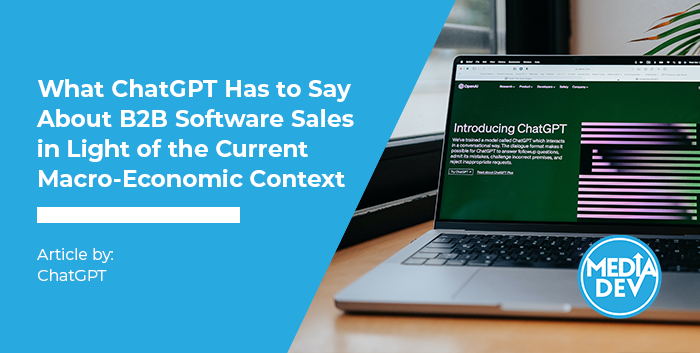It’s been said so much recently that it’s already a cliché — content is king. Yes, I realize, we all know that already, but not all content is created equal (of course I get that this is also another cliché, but this one’s true!). If you’re a marketer for a start-up ISV, it’s important to use your (limited) resources wisely to get the most bang for your buck. So what are the must-haves when it comes to content?
Here’s our shortlist:
1. Videos
Animated explainer videos that quickly show how your solution works, and the benefits it can provide to end-users, are a great way to grab your audience’s attention within a minute or two. If a picture is worth a thousand words, a video has got to be worth tenfold; by seeing the benefits in action, your audience should be able to relate to the key value proposition and want to learn more about the details. Animated videos are kind of a teaser that can be used to lure your audience in, encouraging them to want to engage with the other content you have available.
2. Case studies
For any start-up ISV, it’s a challenge to get that first customer signed up. Early adopters need to be given the best level of customer service so that they become true business partners and natural advocates for your brand. Proving that your product is the right choice for decision-makers means you need a positive track record. Customer testimonials, case studies, and success stories serve as evidence that your solution does what you say it will. Because B2B software sales is a competitive space, case studies are a must-have content marketing tool. Of course, the more you have, the better — this will help a prospect see the benefits from the customer’s point of view (and preferably one from the same activity sector). I kind of equate this to “home staging” in the real estate market — the point is to get a customer to imagine themselves living in your house (so that they’ll want to buy it) or in this case, get the customer to envision him or herself using the solution because of the benefit it provides to someone similar.
3. Blogs
OK, I’ll admit it, everyone’s blogging. But that doesn’t mean you can’t benefit from having a blog too. In fact, they’ve really become one of the most powerful tools in content marketing. Blogs are informal and a great way to express opinions; they help a brand create a more personal and approachable image. They can also be a great way to reach a wider audience, as more people are likely to find a blog post based on common keyword searches; plus, people usually share blog posts that they liked with their friends and colleagues (while they are less likely to share a lengthy whitepaper or an e-book). Creating a blog takes time and preparation, but it’s certainly an easy way to start generating valuable content. Anyone within your organization can make a contribution — and you can solicit external guest posts to keep the articles flowing. Many freelance writers will contribute content for free if doing so will also increase visibility for their own work; otherwise, paying a content writer for blog posts is usually reasonably priced (unless they’re famous!) because the articles are so short in length (between 800 and 1200 words).
4. Optimized landing pages
Product recommendations and word-of-mouth marketing are great ways to create buzz about your solution, but when people do this, they’re not going to send their friends and colleagues a link to your home page. Optimized landing pages should contain content that’s good enough to convince visitors that your solution is worth having a closer look at because it addresses a specific pain point. Landing pages should contain keywords that are likely to be used in search engines; they should use language that is easy to understand by a first-time visitor.
Effective landing pages will contain:
- Product features/benefits that are clearly explained
- Relevant keywords that support your search strategy
- Videos that give a quick snapshot view of the product
- Customer testimonials
- Strong call-to-action so that visitors convert into qualified leads
The last point is fundamental to any inbound marketing strategy; if you want visitors to convert into sales, the next step is as important as getting them to go to the page in the first place. Where should they go from here? Maybe you’d like to invite them to a demo or a webinar, have a one-on-one conversation or a physical meeting? Perhaps, it’s to download a whitepaper or e-book? Like your social media page? Sign up for a newsletter? All of these tactics will help push a simple visitor into a qualified lead that you can nurture until they purchase. Keeping that goal in mind is the best way to ensure your landing pages are optimized.
5. Valuable gated content (infographics, e-books, and whitepapers)
The reason why most inbound marketers suggest creating gated content is so that you can collect a prospect’s contact details (including e-mail addresses) and obtain their explicit consent to reach out to them in the future. With GDPR in full swing in the EU, it’s important that this be done in a way that is fully compliant. There’s a lot of debate about whether gated content is compliant with the principles of GDPR itself, which puts the burden on the data processor to prove it was necessary to request personal data in exchange for content. At the same time, it doesn’t seem like gated content is going to disappear any time soon. Web forms, privacy policies, and cookies all need to inform the user about the kind of information you are collecting and for what purpose; the data subject, once informed, then needs to give you their explicit consent to do this, and if they don’t, be ousted from your site. Obtaining legal counsel about how to ensure compliance is important, as is respecting a data subject’s Bill of Rights when it comes to data protection. That aside, gated content (under certain circumstances) may still get you the (inbound) leads you’re looking for if done in the right way.
Conclusion
Getting creative with your content is a must in order to stand out in a crowded (software) market. The race for relevance is certainly on as people are looking for exact fits while being bombarded by providers. Being present across channels ensures that your audience will see the content they want to see, and where they want to see it. But that’s not enough to ensure sales success — the call to action must be unequivocal. Getting your customers to act as brand ambassadors by encouraging recommendations, and making your content easily shareable both on and offline is a great way to initiate awareness about your product; and of course, having a great product that users love to use makes it all the better.







